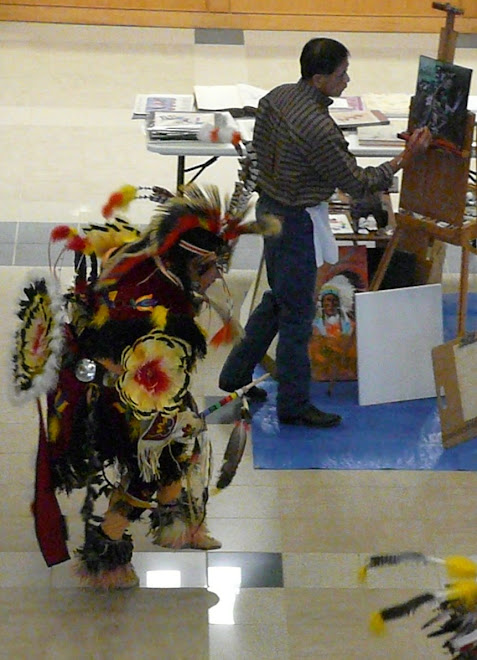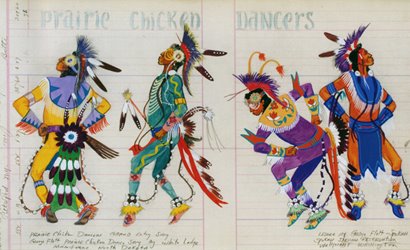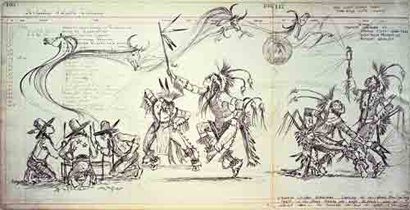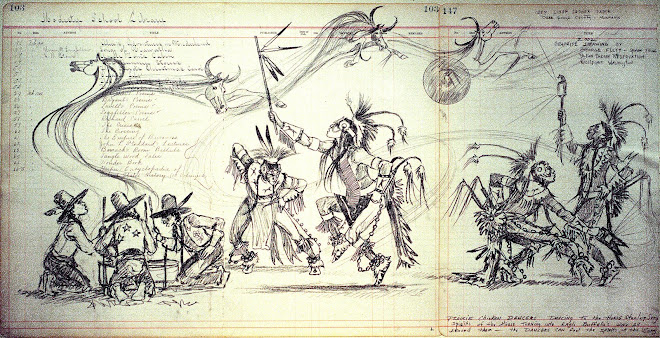George Flett's Prairie Chicken Dancers

One of Flett’s favorite ledger subjects is of Prairie Chicken dancers. Indeed, he is responsible for the popularity of Prairie Chicken Dancing in the Northwest, where people are attracted to his shows and sometimes have a chance to watch the group of drummers and dancers he brings with him.

Prairie Chicken Dancers Grand Entry Song—White Lodge Mandaree, North Dakota. Gouache and ink on 1891 ledger paper, 9 1/2 x 16 1/2 inches
Watching carefully, he tries to capture the precision with which the dancers imitate the prairie chicken postures, movements, and even the shapes of their beaks. He tells us that he feels this power when he watches Prairie Chicken Dancers, who have inspired his drawings. And he wants to pass their power down to his viewers.

Prairie Chicken Dancing to the Horse Stealing Song, Graphite on 1904 ledger paper of Modesty School, Deer Lodge, Montana. 2003, 22 x 30 inches
Flett’s caption, written in the lower right-hand corner of the ledger page, verbalizes the pictographic story he tells in three panels, which capture the movement and spiritual power cinematically.

Drumming the Horse Stealing Song, they are inspired by the spirit of a horse turning into an eagle.

The dancers. . .

Prairie Chicken Dancing to the Horse Stealing Song

Story of the Prairie Chicken Dance
Flett’s "Story of the Prairie Chicken Dance" is a “thick” narrative of the dance’s origin. It is composed of three historical moments, or tenses, which take the viewer from the storytelling present (on the right), to the near past (in the center) as the listeners picture the prairie chicken dancers they have seen, to the origin of the dance, when one of the young men, watching some prairie chickens mating (in the scene below), was given the power to dance like them by his spirit helper (in the scene above it).
And the drawing (or Flett’s story) includes not only a temporal plane but a spiritual plane behind it—where the horse spirits flying above the tipi empower the storyteller, a prairie chicken spirit empowers the dancers of the near past, and the original prairie chicken spirit empowers the young man who watched the prairie chicken mating dance. (See "Prairie Chicken Dancers Dancing to the Horse Stealing Song.")
In contrast to the power conveyed in his story is the drawing’s mundane ground: the 1911 ledger page of William Gross’s account book, which ironizes the story. The irony becomes vivid when we notice the lively prairie chicken spirit, on the left-hand side of the page, sitting above the name of the very dead businessman.


